What Is Picanha and How Do You Cook It?
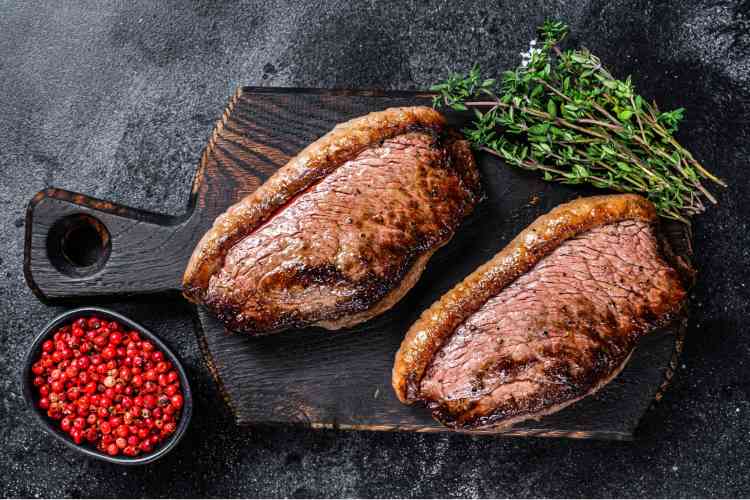
Picanha, also known as coulotte, stands out as one of the most delicious cuts of meat worldwide. But what is picanha steak? What traditional cuisine uses it, how is it cooked and where can you buy it?
Let’s go beyond how to cook a perfect steak to understand picanha comprehensively, including its origins, pricing, availability online and in the U.S., cutting techniques, and, naturally, optimal cooking methods. Read on if you want to get a good grasp of what it is like compared to other types of steaks.
Jump to Section
What Is Picanha?
Picanha, widely revered as the crown jewel of Brazilian cuisine, holds a cherished spot in the hearts and taste buds of meat lovers around the globe. Originating from the top sirloin cap of the cow, picanha is celebrated for its impeccable balance of flavor and tenderness.
What distinguishes picanha is its distinctive fat cap, making it a very juicy cut of meat, perfect for a Brazilian churrasco barbecue. Despite its opulent flavor and texture, picanha requires minimal seasoning to shine, allowing its innate flavors to steal the spotlight. It is perfect for many dishes, such as skewered Picanha with Bone Marrow Chimichurri and Farofa de Ovo.
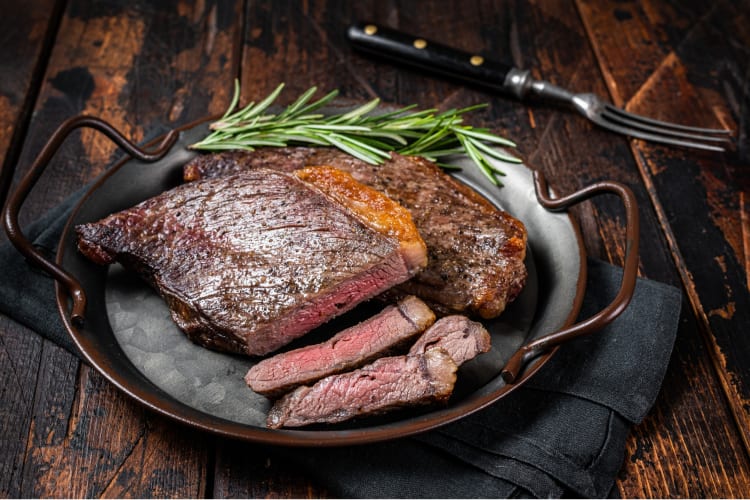
Where Does Picanha Come From?
Picanha originates from Brazil, occupying a revered place in the culinary landscape, prominently featured on the menus of Brazilian steakhouses known as churrascarias. Picanha is a key part of Brazilian steakhouse cuisine and has become one of the most popular cuts of meat across the world. It represents the essence of churrasco—community, celebration, and communal dining. While primarily produced in Latin America, it's also sourced from regions as distant as Ireland and Poland.
The name "picanha" traces its roots to "picana," a herding pole used in Spain and Portugal to guide cattle. This historical association reflects the immigrant farmers who brought the term to Brazil, which has since become synonymous with this esteemed cut of beef.
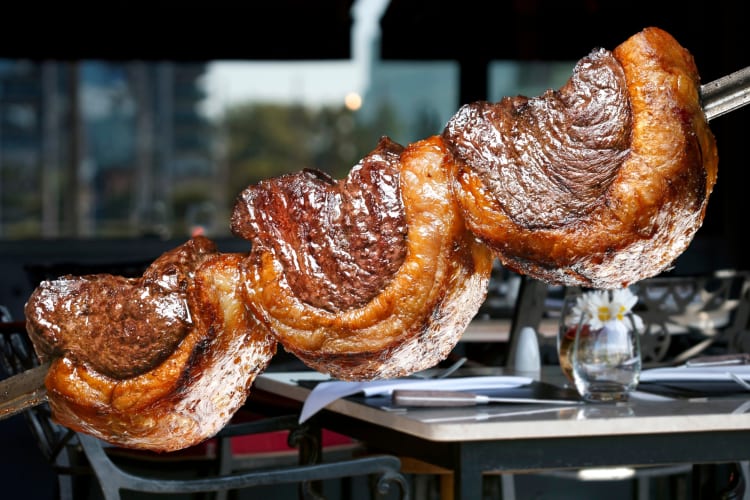
What Cut Is Picanha?
Picanha is a triangular steak cut from the rump area above the rear, where a thick layer of fat rests underneath the cut. This region, referred to by butchers as the round, yields this prized cut. In the U.S., it may be labeled as a sirloin or rump cap. It is called a ‘cap’ because the layer of fat is still attached, which provides the cut with a lot of juicy flavor.
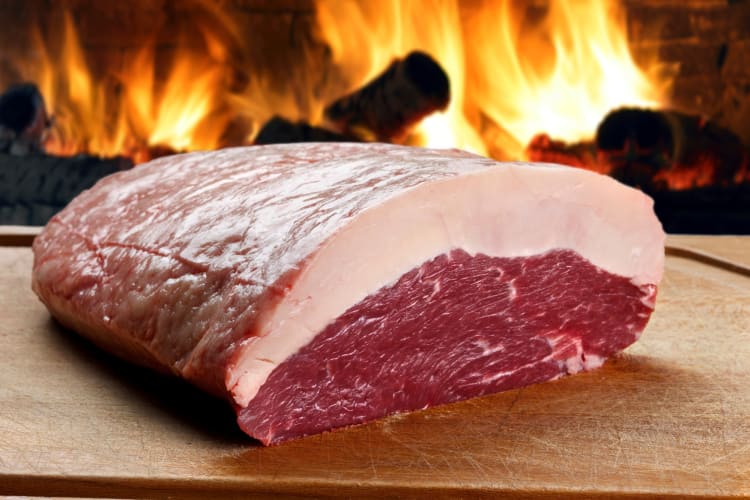
What Does Picanha Taste Like?
Picanha offers a unique culinary experience with its juicy texture and rich flavor. Grilled over open flames, its marbled fat melts, adding moisture and enhancing taste. It is essentially combining the juicy fat of ribeye with the texture of sirloin. Cooked perfectly, it melts in your mouth with each bite, ensuring a savory treat.
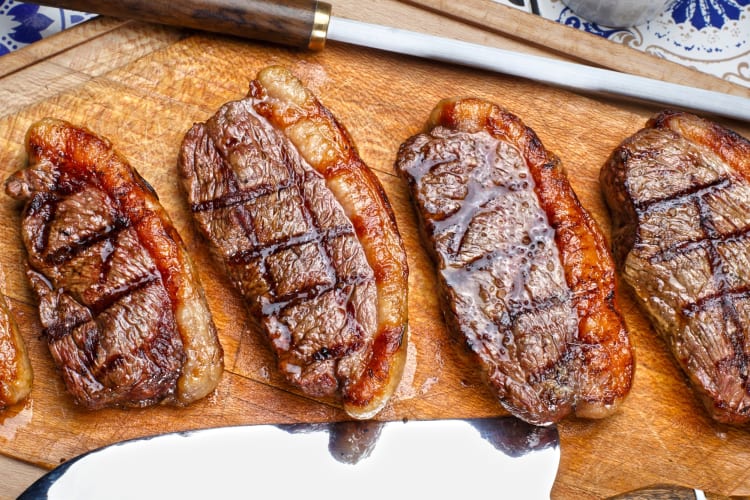
Picanha vs. Tri-Tip: What's The Difference?
Picanha and tri-tip are often mistaken for each other due to their popularity and similarities. Both are from the same portion of the cow, the sirloin. This covers the cow’s mid-back down to the hip. Coming from a similar area, they share certain flavors and nutritional benefits. Both are also lean cuts rich in iron, vitamin B12 and protein, offering lower calorie levels compared to fattier meats.
However, there are several key differences between picanha and tri-tip. Picanha tends to be pricier and less common in the U.S., offering a rich, beefy taste. Tri-tip, on the other hand, has a milder flavor due to its leanness. In terms of texture, picanha is tenderer with a generous fat layer, while tri-tip has a firmer consistency with less fat.
Visually, picanha has a fan-shaped appearance, while tri-tip is triangular. These differences make each cut unique, catering to various preferences and culinary uses.
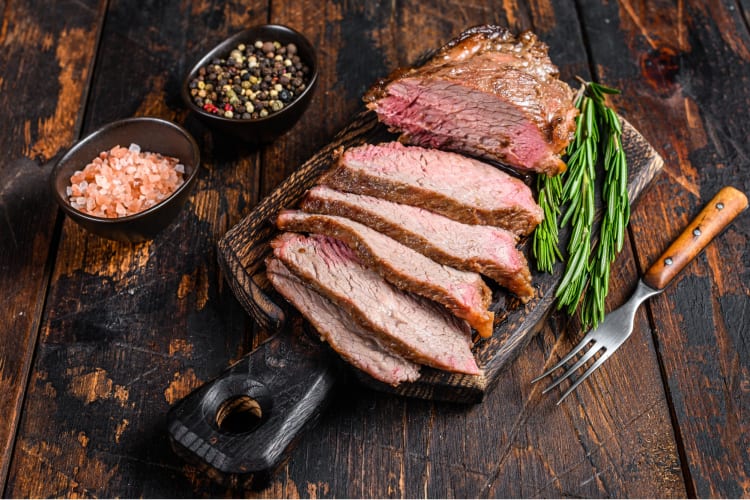
How To Cook Picanha Steak
There are many ways to cook picanha steak, like using a rotisserie or oven, but the most popular one is grilling it over open flames. To prepare picanha, season it generously with coarse salt and pepper and then drizzle both sides with olive oil. If you don't have a grill, a cast-iron skillet works well for achieving a perfect sear.
Despite the picanha steak not needing much extra flavor, have some chimichurri sauce at hand to have with the meat, such as red chimichurri or cilantro chimichurri, as this will make the picanha even more delicious.
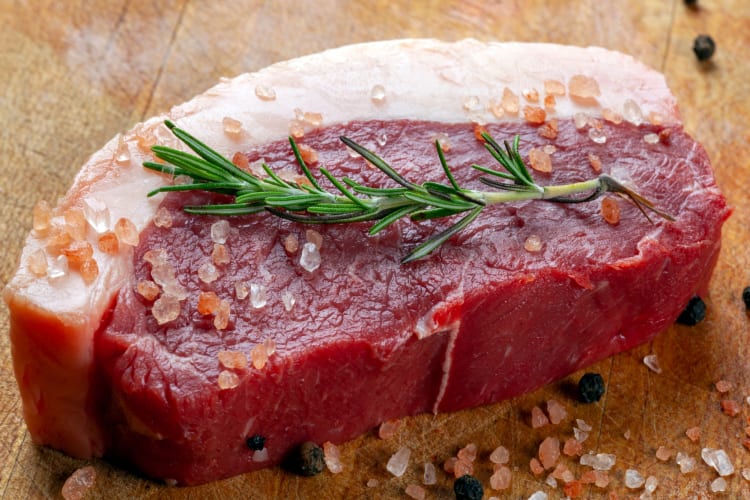
How To Grill Picanha
To grill picanha, start by searing the fat side of the meat on the grill for three to four minutes.
Then slice the meat into individual steaks against the grain, forming C-shaped cuts. Generously season each steak with coarse salt and place before placing them back on the grill, fat side up. Cook them like normal steaks. Do not cook for longer than medium rare, as it will likely be too tough otherwise.
How To Cook Picanha in the Oven
You must season and cut the picanha beforehand, but this method is pretty simple. Preheat the oven to 180°C (350°F). While it heats up, use a cast iron frying pan at a high heat on the hob to cook the fat, without cutting into the meat. Make sure to use the best pan for the steak. Place the frying pan into the oven for at least 45 minutes. 49 to 51°C (120 to 125°F) will get you rare steaks, while 55 to 57°C (130 to 135°F) will get the steaks cooked medium rare style.
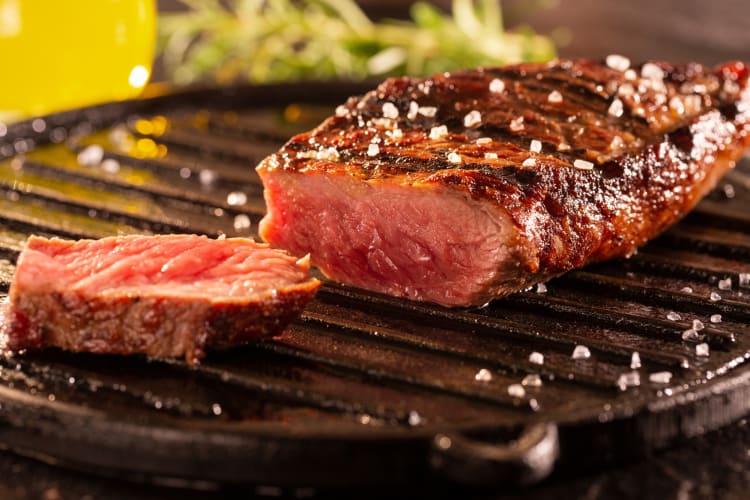
How To Cut Picanha
As mentioned above, there are various steps to slicing picanha. If you are using a whole picanha cut, cut them into three or four chunky pieces and sear them on the grill. Then slice against the grain to make one or 1 ½ inch individual steaks that keep the C shape.
Now that you've learned about picanha steak, you might want to improve your cooking skills or explore more about it. Check out cooking classes near you to learn how to cook this meat perfectly. Also, many online cooking classes will offer comprehensive guidance on preparing picanha, exploring various recipes and techniques.
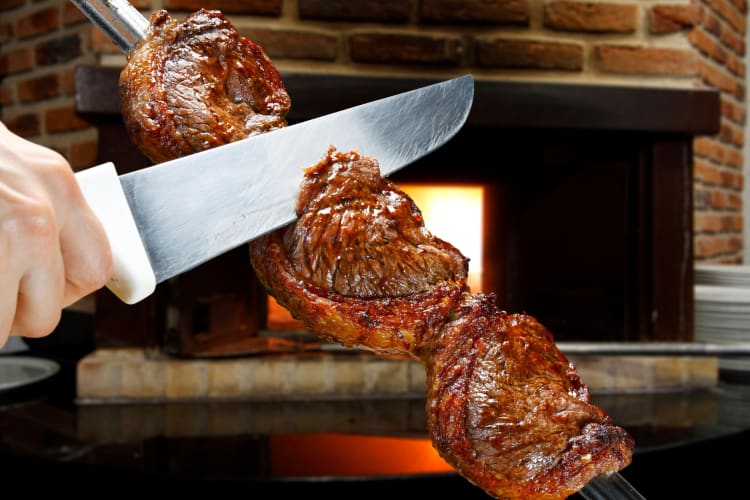
Where To Buy Picanha
When it comes to purchasing picanha, you won’t find this cut in most butchers in the U.S., as sirloin caps are normally cut into thin steaks, like round, loin and rump. But there are places you can buy this steak, such as Snake River Farms. Butchers skilled in full animal breakdown should be able to provide this cut upon request. It might be best to ask for a sirloin cap with the thick fat still on. Online retailers such as PorterRoad.com also offer the convenience of purchasing picanha from home.
Is Picanha Expensive?
As for the cost, picanha typically ranges from $55 to $65 for a 3-4 pound cut. Comparatively, sirloin fillet tends to be more budget-friendly while tri-tip tends to be about $10 cheaper than picanha. This is because picanha is rarer as it is not a part of the cow that is sold by butchers often.
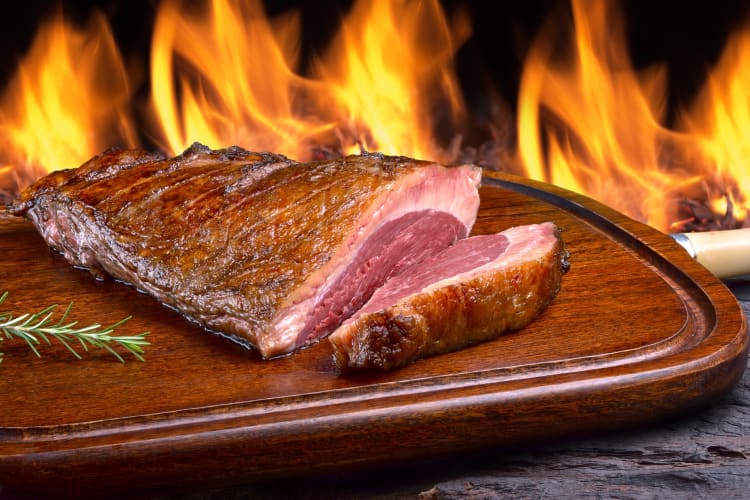
Picanha stands as a true culinary gem, celebrated worldwide for its rich flavors, tender texture and versatility. From its humble beginnings in Brazilian cuisine to its now global appeal, this cut of meat has captured the hearts and palates of food enthusiasts everywhere.
As you cook with picanha, may each bite be a flavorful delight. Let your culinary adventures with this versatile meat inspire you to create tasty dishes and enjoy memorable meals with family and friends.
For even more ways to explore your favorite foods, check out other experiences happening on Cozymeal.



FOOD FOR THOUGHT?
Join the conversation.